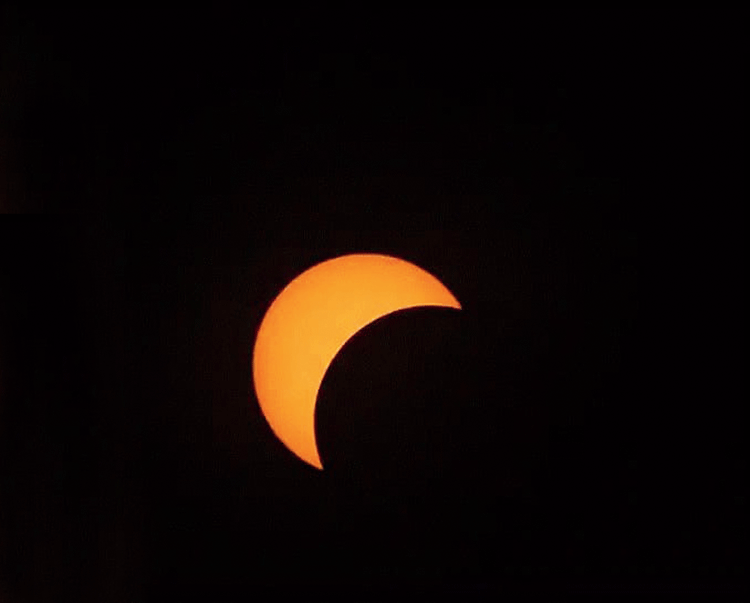Sky lovers in the city are expected to catch glimpses of a partial solar eclipse on June 21, provided clouds do not play spoilsport.
An annular solar eclipse, which occurs when the disc of the moon covers the central portion of the sun leaving only a ring-like peripheral region called the “ring of fire” visible — will happen on June 21, Debiprosad Duari, the director (research and academic) of MP Birla Planetarium, said.
A similar annular solar eclipse had happened on December 26 last year. The eclipse was prominently visible from a stretch of southern India. Calcutta was tipped to see a partial eclipse but an overcast sky had hampered visibility.
An annular eclipse takes place when the earth comes closer to the sun so that the sun looks little bigger than usual. Around the same time, the moon reaches near its farthest position in its orbit, thereby appearing a little smaller than the average full moon.
In such a situation, if a solar eclipse occurs, the disc of the moon cannot completely cover the sun, resulting in a narrow band of light round the moon’s dark silhouette.
“On June 21, the annular eclipse will start for people of Congo in Africa and slowly progress through South Sudan, Ethiopia, Yemen, Oman, Saudi Arabia, Indian Ocean, and Pakistan before entering India over the state of Rajasthan,” Duari said.
“The path of annularity will then pass through Haryana and Uttarakhand before moving to Tibet, China and Taiwan before ending in the middle of the Pacific Ocean. The longest duration of the eclipse will be seen near Joshimath in Uttarakhand. But from a much wider region around the path, people can observe partial solar eclipse of various magnitude and obscuration, depending on their geographical location.”
The path of annularity covers places from where the ring of fire can be seen.
“Calcutta will witness a partial eclipse, starting at 10.46am and ending at 2.17pm. The maximum eclipse will be visible at 12.35pm, when 65.5 per cent of the sun will be obscured,” Duari said.











